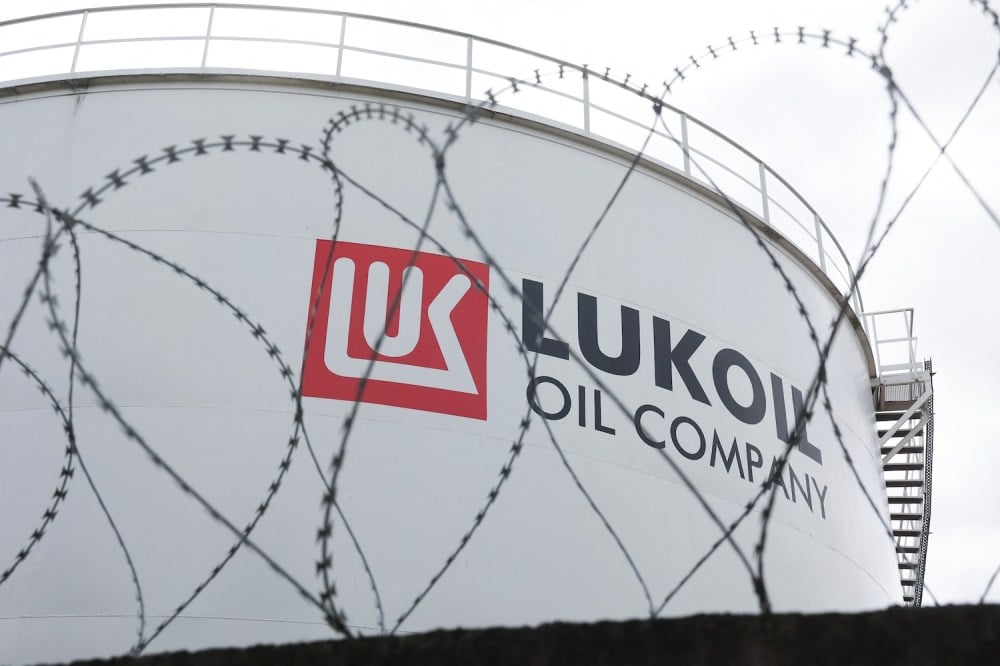In the good old days, when Russian President Vladimir Putin was in his prime and relations with the West were in decent shape, it was common to call Russia “an energy superpower.” Through the 2000s, oil and natural gas exports boosted the country’s growth and enhanced Putin’s legitimacy. Energy added to Moscow’s geopolitical clout, too, not least in Europe. Even after the annexation of Crimea in 2014, European Union members pressed ahead with pipeline projects such as TurkStream and Nord Stream 2.
But the “superpower” part of the story is now over. As of 2025, it is clear that energy is as much a vulnerability as it is an asset. Among the factors making this obvious are Ukrainian strikes against Russian infrastructure, the EU’s phaseout of Russian oil and gas purchases, and U.S. sanctions on Rosneft and Lukoil. As a result, Russia’s leverage abroad will continue to dwindle as its economic challenges at home continue to rise.
Initially, in the aftermath of its 2022 full-scale invasion of Ukraine, Russia appeared to be doing fine. Despite the Western restrictions—a G-7 oil price cap and an EU ban on coal and seaborne crude imports—Russian exports of crude stayed at a stable 5 million barrels per day. China, India, and Turkey picked up the slack as Western customers shifted to non-Russian suppliers. Refined product found its way to the European market. Russia’s notorious shadow fleet provided a workaround for the price cap (which currently stands at $47.6 per barrel). Moreover, Russia was able to switch some of the gas flows from the EU to China, where sales jumped from 16.5 billion cubic meters (bcm) in 2021 to a record 31 bcm in 2024. During Putin’s visit to Beijing in September, China and Russia signed a deal on the Power of Siberia 2 pipeline, which could add another 50 bcm. As a result, Russia’s annual energy revenues averaged around $190 billion, or around 9 percent of its nominal GDP, in 2024.
Yet this is now likely to change if U.S. President Donald Trump’s oil sanctions are enacted and enforced as declared. Oil is even more important to the Russian economy than gas, and Rosneft and Lukoil account for around 50 percent of Russia’s upstream production of it. The state-owned Rosneft alone contributes about 17 percent of the Russian Federation’s budget revenues. The Biden administration was reluctant to go after these companies for fear of driving global oil prices up and hurting U.S. consumers. Before leaving office in January, it chose to hit Gazprom Neft and Surgutneftegas, two smaller outfits. And Trump previously wasn’t interested in sanctions at all.
Now, however, with the United States taking action, we will start to see more dramatic results. Crucially, the U.S. government appears to have coordinated with the EU and United Kingdom. Last week, the EU adopted the 19th sanctions package against Russia, which includes measures such as blacklisting 117 more vessels from its shadow fleet. On Oct. 15, the U.K. unveiled sanctions against Rosneft and Lukoil, as well, alongside sanctions on India’s Nayara refinery, four oil terminals in China, and 44 shadow fleet vessels. The new sanctions may not dissuade India from buying Russian crude, but they will complicate doing business with the Russian majors as financing, insurance, and shipping costs go up.
Russia’s oil profits were already falling. In the first half of 2025, revenues slumped by 17 percent year-on-year. Now, all that remains to be seen is how aggressively U.S. secondary sanctions will be applied against refiners and traders, who could be denied access to the U.S. market and financial system, while facing civil or even criminal cases, as well. China and India appear to have reduced or even suspended oil purchases. Yet they can resume imports, should the Trump administration shift its focus away from Russia. Furthermore, both Rosneft and Lukoil hold assets across Europe and elsewhere in the world. If they somehow win exemptions, the sanctions’ impact will be mitigated—like what happened with the earlier round of sanctions introduced by the Biden administration. The privately-owned Lukoil announced it would be selling its international assets.
Ukrainian strikes on Russian oil infrastructure have further exacerbated the sanctions’ impact. Since August, drones have hit 21 of Russia’s 38 large refineries which have a combined capacity of around 123 million tons per year or 45 percent of Russia’s total output. Combined with strikes against storage and pipeline capacity, the total damage is estimated at about $706.5 million. While a large share of those facilities have been repaired, these strikes have also forced Russia to shift its exports from refined product to crude oil, which reduces profits. As energy expert Sergei Vakulenko put it, “Russia’s refineries are like a man being repeatedly punched—not killed by any single blow, but gradually worn down.” Now, gasoline shortages are starting to affect ordinary Russians as several regions have reported empty filling stations and lines of motorists.
In Europe, Russia’s once fearsome gas weapon has also lost its force. In 2021, Russia accounted for 45 percent of the EU’s gas imports. Now, that share is down to 11 percent, as liquefied natural gas (LNG) from global suppliers, including the United States, replaces Russian imports. This week, EU energy ministers approved legislation that requires companies to phase out long-term contracts—whether pipeline gas or LNG—by the end of 2027. The deadline for most short-term contracts is next January. As a result, even Russia-friendly countries such as Hungary and Slovakia will have to find other suppliers.
Of course, some of Russia’s gas might still end up in Europe via intermediaries such as Turkey and Azerbaijan. Turkey has long voiced ambitions to be a gas hub, reexporting gas from neighboring countries to European customers at a profit. But while this might result in limited profits for Russia, it won’t come with geopolitical influence. As long as trade is going through a middleperson, the Kremlin won’t be able to leverage it to build cozy relationships with governments and national champions throughout Europe. Nor can it use the threat of supply disruption as an instrument of pressure.
Finally, China is no substitute for Russia’s loss of the European market. Even after the Power of Siberia 2 pipeline, which will connect Urengoy in northern Russia to China’s gas grid via Mongolia, comes online, its volume would be far below the 155 bcm that the EU imported in 2021. And Beijing is driving a hard bargain on the price and other commercial conditions around the contracts with Russia. Russia will probably take a Chinese loan to finance the pipeline’s construction, and it will be receiving payments in yuan, tying it even closer to China. Notably, Moscow dragged its feet on this project for years, accepting most of Beijing’s conditions only after Crimea’s annexation. Now, it faces more isolation and worse terms.
In the meantime, reduced foreign sales create compounding problems at home. Gazprom reported losses to the tune of $6.9 billion in 2023 and $12.9 billion in 2024. Domestic prices have risen by roughly 30 percent since the start of the war, adding to Russia’s problem with inflation. This is still relatively low in comparison to other countries, but it is no longer possible to subsidize Russian households with the receipts from sales to premium EU customers. To maintain stability, the government must dip deeper into the state budget. Furthermore, investment into new fields and infrastructure is stagnant as money grows short and access to international investment and technology is cut off.
Russia is still a major player on the world’s energy market. It accounts for around 10 percent of global oil production and 15 percent of global natural gas production. The Russian economy has proven resilient, with the likes of China and India helping Moscow fend off Western sanctions. But what analysts call military Keynesianism—pumping money generated by the sale of commodities abroad to boost the defense industries, salaries in the state sector, and welfare spending—is running its course. On top of the human and political costs of the war, Russia will pay the price for overheating its economy. With growth falling from 4.3 percent of GDP to a projected 1-1.3 percent in 2025 and 2026, new Western energy sanctions are adding to chronic stagnation.
In the end, Russia was unable to effectively use oil and gas as a means of coercion. Even the threat of soaring prices has not deterred its Western adversaries from sanctioning its energy assets. In fact, the international oil market has remained surprisingly stable, as OPEC+ announced plans to raise output. The trade in hydrocarbons certainly helped Russia buy favor and deepen interdependence when times were good. But when the going got tough, Moscow discovered that consumers wield as much power as producers.
The post Why Putin’s Energy Weapon Failed appeared first on Foreign Policy.




